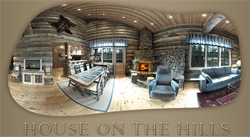
Culture
The traditional Lappish and Sámi influences are still very much visible in the culture in Saariselkä, although the development of tourism has brought over new features from Europe and other parts of Finland thus changing the local customs.
Cultural heritage is considered important, and the area’s unique culture must be nurtured. As a traveller you should be inspired by cultural experiences that enrich and colour your trip as a unique experience in your memories.
Nature and the seasons have strongly influenced the cultural development over the centuries and millennia.
Food & Cuisine
As one would expect, the food that is characteristic of Saariselkä area contains pure local ingredients like salmon, whitefish and reindeer, as well as Lapland berries cloudberry and lingonberry, and not forgetting the mushrooms. The food is nutritious and healthy.
Over the years, Lappish food has received the appreciation it deserves, and is now praised by celebrity chefs and tourists alike. Luckily there are several restaurants in Saariselkä that use local ingredients, and prepare dishes according to old traditions.
You should try these out:
– Reindeer tenderloin and sirloin
– Reindeer stew
– Lingonberries, cloudberries, and jams made from them
– Salmon from the river Teno, and whitefish from Lake Inari
– Mushrooms, especially false morels
As the saying goes, eating a reindeer fillet is the most fun you can have with your trousers on.
If you want to learn to cook like the Lappish, attend a cooking course at hotel Tunturi. The cooking course lasts one evening and includes cooking, spending time together, and of course tasting your creations.
Gold & gold panning
Gold and gold panning have strongly influenced the development of culture of the Saariselkä area. As early as the 1870s, the gold rush brought people to the region in hope of big gold nuggets.
Did you know that Finland’s largest gold nugget was found in the Saariselkä area. The nugget weighed an incredible 393 grams and was found by Evert Kiviniemi in 1935. A nugget this size is worth thousands of euros.
With the gold panners arriving, active villages developed. The prospectors needed accommodation, food and services that developed slowly over decades.
At the famous panning area of Lemmenjoki river, work started in 1945 after the Second World War. The best way to explore the river is on a river boat tour, which starts from Njurgalahti or Kultahamina.
Local companies also organize gold panning courses and tours. You can try your hand at gold panning, too – perhaps you’re even luckier than Evert Kiviniemi!
Reindeer & Reindeer Husbandry
While gold panning has only had a local effect, reindeer husbandry is characteristic of northern Finland. For centuries, reindeer husbandry has played an important role in people’s daily life and survival, and it is still a major industry in the Saariselkä area.
Reindeer is used for:
– Meat
– Reindeer skins, clothes
– Transport (sledges, sleighs, skis)
– Tourism
The reindeer is a semi-domestic animal that grazes in the open. The reindeer husbandry includes separating, gathering, marking, counting and slaughtering of the reindeer. In the winter, the reindeer need to be fed and herded.
Reindeer husbandry is regulated in Finland by the Reindeer Husbandry Act, which defines the area for reindeer herding. The area, which includes the total land area of 23 municipalities, and extra areas from 4 other municipalities, extends over 122,936 square kilometres (approx. 36% of the total land area of Finland).
Mainly the Sámi people practise reindeer husbandry as their main occupation.
The Sámi people
The Sámi areas in Finland include the municipalities of Enontekiö, Inari and Utsjoki along with the Lapland reindeer herding cooperative area in the municipality of Sodankylä. The majority of the world’s Sámi people now live in Norway and Sweden. There are only 6,000 of them in Finland, and only 3,000 of them speak Sámi as their mother tongue. Many Sámi people have moved south in search of work and education.
The Sámi people have lived in the area that is now Finnish Lapland for many years before Finland or the other states were established.
Today, the Sámi cultural autonomy is defined in the Finnish Constitution.
Inari region is Finland’s strongest Sámi area, and is where the Sámi Parliament which is the highest political body for the Sámi living in Finland, assembles. Elections are held every four years for the Sámi Parliament 21 members and 4 alternate members.
There are also the Siida Sámi Museum and Nature Centre, Sámi Radio, and Sajos, the Sámi culture centre, in Inari.



